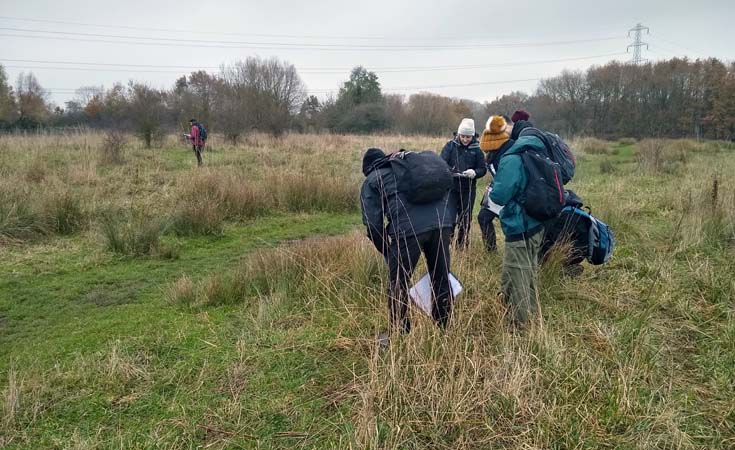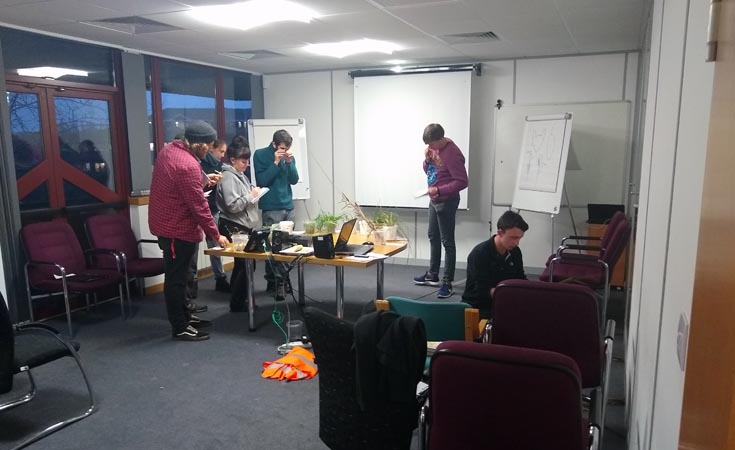Back in November 2018, students from Imperial College London joined some of our Assistant Ecologists on Thomson’s annual two-week Preliminary Ecological Appraisal (PEA) training course, run by Director of Ecology, Richard Arnold. PEAs are often the first step towards gaining planning permission for developments and as such are an essential skill to have as an ecologist, and a necessary requirement for developers and project managers.

Richard has been working in the industry for over a decade and is an expert naturalist with an interest in botany. He has been running the course annually for students of Imperial College and newly qualified assistant ecologists at Thomson since 2007, with approximately 80 students over the years.
What is a Preliminary Ecological Appraisal (PEA)?
The purpose of a PEA is to assess the potential of an area of land for its value to support protected habitats and species. A PEA report outlining the results of the assessment is often required by local planning authorities as part of planning permission for developments, and most projects that Thomson work on will as the first step.
Course aims
The aim of the training course is to introduce the necessary skills required to complete a PEA, including field survey and identification skills, the use of desk-based online resources and production of the final report. The study site in question was a Local Nature Reserve a few miles from our Guildford office, Riverside Park Local Nature Reserve. For the training, a fictional housing development was proposed within the site for the students to assess the impacts.
Identification of species
The first stage of the training involved two days learning to identify the common plant species likely to be encountered on site. This centred around an office based session going over key identifying features, followed by a field session for hands on identification practice.
Day one focused on identifying trees and shrubs, with the second looking at grasses and flowering plants. During the site walkover, the students were given the opportunity to practice identification in the field, covering 20 tree species and around 15 grasses.

November is a challenging time of year to undertake botanical surveys. There may not be any flowers and the leaves have almost all gone, but there are clues for the keen-eyed ecologist to help with identification. These are essential skills to develop as we are required to undertake PEAs all year round. Following the site visit the students returned to the office for a plant I.D quiz to test their new knowledge.
Desk-based research
The second stage of the training focused on desk-based research, using online resources to undertake a search for species and designated sites in the local vicinity of the study site. The students were taught how to use Local Biological Record Centre information and online resources, like the Multi-Agency Geographic Information for the Countryside (MAGIC) database.
Using these resources can help put together a picture of what species were present on the study site and how the site relates to the wider countryside. All this information helps an ecologist to assess the potential impact any proposed developments could have on species present at the site or nearby habitats.

After this the students were let loose to explore Riverside Park – armed with maps, coloured pencils and field guides. The aim of the site visit is to classify the broad habitat types present and highlight anything of interest for protected species, such as veteran trees for bats.
They had two days to complete the field survey of the 30-hectare site and the following week to write up their maps and reports, including their assessments for the fictional development, ready for critique by Richard.
The hands-on experience and professional critique is a valuable experience for budding ecologists. Often industry experience is hard to gain for those seeking to enter ecological consultancy and field skills are highly sought after among candidates.
How we can help you
Thomson regularly welcomes new ecologists to our consultancy to build and strengthen existing teams. This expertise tends to be in short supply in the UK, though large scale infrastructure projects, and the impact of Brexit, could see more demand for environmental professionals, nationally and internationally.
Preliminary ecological assessments are a requirement of any development prior to planning application, to mitigate against any threats to protected species. Most projects Thomson take on require a PEA as a first point of call. Not carrying out assessments can be the difference between a project progressing or being delayed.
Don’t get caught out when it comes to nature conservation legislation or planning policy. If you have ecological requirements on any of your upcoming projects, get in touch with us today.











